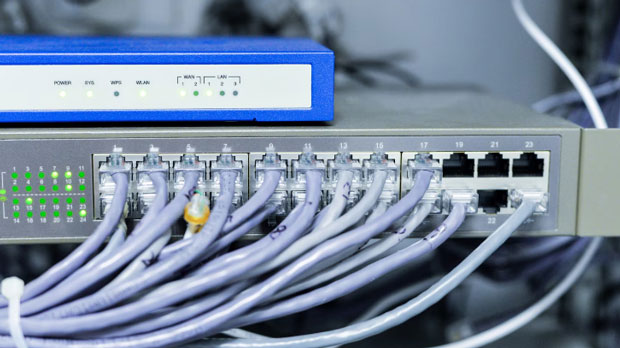In today’s digital landscape, the ability to deploy a web proxy across various platforms, including both PC and mobile devices, has become a necessity for many businesses and individual users. The term "proxy web proxy" refers to services or applications that act as intermediaries between a user's device and the internet. These proxies offer numerous benefits, such as enhanced privacy, security, and the ability to bypass geographical restrictions. The question arises whether proxy web proxy solutions can be deployed seamlessly across different platforms like PCs and mobile devices, ensuring consistent functionality and user experience. What is a Proxy Web Proxy?A proxy web proxy is a tool that facilitates indirect communication between a user’s device and the internet. When a user accesses the internet, the proxy server requests data on their behalf and sends it back to the user's device. This intermediate step helps mask the user’s IP address, providing enhanced privacy. Furthermore, it can be used to access geo-restricted content and ensure secure browsing. Proxies can also cache data to enhance speed and reduce bandwidth usage.The role of proxy web proxies is to provide more control over the internet experience. With the increased need for security and privacy, many users are seeking reliable proxy solutions to protect their data. The question of cross-platform deployment becomes critical when considering the growing use of different devices, including PCs, smartphones, and tablets.Cross-Platform Deployment: Challenges and Opportunities1. The Need for Cross-Platform SupportIn the modern world, the proliferation of mobile devices and PCs has made it essential for web applications to function across multiple platforms. Users want to access proxy web proxy services regardless of whether they are on a PC or a mobile device. For businesses offering these services, the ability to provide consistent user experience across various platforms is crucial. Additionally, users are increasingly relying on mobile devices for everyday internet access, making cross-platform compatibility a top priority.2. Technical Challenges in Cross-Platform DeploymentDespite the high demand for cross-platform solutions, deploying proxy web proxy services seamlessly on both PC and mobile devices presents several technical challenges. One of the primary issues is the difference in system architecture and hardware between PCs and mobile devices. While PCs generally run desktop operating systems like Windows or macOS, mobile devices use mobile-specific operating systems like Android or iOS. These disparities often result in compatibility issues when trying to create a single solution that works effectively on both platforms.Moreover, the performance of a proxy web proxy can vary depending on the platform’s processing power and internet connection. Mobile devices typically have lower processing power and less bandwidth compared to PCs. This may affect the performance and speed of the proxy service on mobile devices, causing slower browsing speeds or increased latency.3. Design and User Experience ConsiderationsAnother challenge is ensuring a consistent and user-friendly interface across both platforms. The layout, functionality, and design of the proxy service must adapt to different screen sizes, operating systems, and input methods. For instance, mobile devices typically use touch screens, while PCs rely on keyboard and mouse input. The user interface (UI) must be optimized for both environments to ensure smooth and intuitive interactions.Moreover, mobile devices often have unique constraints, such as limited storage capacity and battery life. Proxies that rely heavily on resource-intensive operations may drain the battery more quickly or take up excessive storage space, leading to a less favorable user experience on mobile devices.4. Network and Connectivity ChallengesAnother aspect that must be addressed is network connectivity. PCs are generally connected to stable Wi-Fi networks, providing consistent bandwidth and speed. In contrast, mobile devices are often dependent on variable mobile data networks or public Wi-Fi, which can be unreliable and slower. Proxy web proxies that work well on Wi-Fi may experience issues when mobile data networks are used, such as latency, timeouts, or dropped connections.Therefore, ensuring that the proxy service performs well on both mobile data networks and Wi-Fi connections is crucial. Proxy servers must be able to detect and adjust to different network conditions, ensuring that users experience minimal disruptions.5. Security ConsiderationsSecurity is a key concern when deploying a proxy service across multiple platforms. The integrity of the proxy service must be maintained across both PC and mobile environments. Mobile devices, in particular, are more susceptible to security threats such as malware, which can compromise the effectiveness of the proxy service.To protect users on both platforms, it is essential for proxy web proxies to incorporate advanced security measures, including encryption, data protection, and malware detection. Additionally, authentication methods such as two-factor authentication (2FA) should be implemented to ensure that only authorized users can access the proxy service.Opportunities for Proxy Web Proxy ProvidersDespite the challenges, there are several opportunities for proxy web proxy providers to offer cross-platform solutions. By leveraging modern web technologies such as responsive web design, HTML5, and JavaScript, developers can create proxy services that are compatible with both PC and mobile devices. This approach ensures that the user interface adapts to different screen sizes, providing a consistent experience.Additionally, mobile applications dedicated to proxy services can be developed for both Android and iOS platforms. These apps can be optimized to take full advantage of the mobile environment, ensuring that proxy services run efficiently on mobile devices. By offering a seamless experience on both PC and mobile devices, proxy web proxy providers can increase user engagement and satisfaction.Conclusion: A Growing Necessity for Cross-Platform Proxy Web Proxy SolutionsIn conclusion, the demand for cross-platform deployment of proxy web proxy services is undeniable. With users accessing the internet from a wide range of devices, including both PCs and mobile devices, it is crucial for proxy solutions to function seamlessly across these platforms. While technical challenges such as system architecture differences, performance limitations, and network connectivity issues exist, the opportunities for growth and innovation are significant.By addressing these challenges and focusing on security, design optimization, and efficient performance, proxy web proxy providers can offer solutions that meet the needs of modern users. As cross-platform compatibility becomes increasingly important, the future of proxy web proxy services will likely involve more sophisticated and user-friendly solutions that cater to both PC and mobile users alike.
Aug 14, 2025



































































